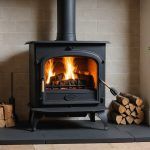Building a Fire-Resistant Garden Shed in the Scenic Countryside of Wales: Essential Tips and Considerations
Why a Garden Shed in Wales is a Great Idea
Wales, with its breathtaking landscapes and picturesque countryside, is an ideal location for building a garden shed. Whether you are a local resident or a visitor looking to enhance your holiday home, a garden shed can serve multiple purposes, from storage and gardening to a cozy retreat. Here, we’ll explore the reasons why a garden shed is a great addition to your property in Wales.
Enhancing Your Property
A garden shed can significantly enhance the aesthetic and functional value of your property. In areas like the Brecon Beacons, where natural beauty abounds, a well-designed shed can blend seamlessly into the landscape while providing a practical space for gardening tools, equipment, and even a hot tub or garden room.
In the same genre : Essential Guidelines for Safely Removing Asbestos During UK Home Renovations
Year-Round Use
Unlike some other parts of the United Kingdom, Wales has a relatively mild climate, making it possible to use your garden shed year-round. Whether you’re tending to your garden in the spring, enjoying a cup of tea in the summer, or seeking a quiet retreat in the winter, a garden shed can be fully equipped to meet your needs.
Cost-Effective
Building a garden shed is often more cost-effective than constructing a larger outbuilding or extension. It requires less material and labor, making it an affordable way to add value and functionality to your home.
Also to discover : Top Pollinator-Friendly Plants to Enliven Your Bristol City Centre Garden
Planning and Permission: What You Need to Know
Before you start building your garden shed, it’s crucial to understand the planning and permission requirements in Wales.
Planning Permission
In the United Kingdom, including Wales, you generally do not need planning permission for a garden shed if it meets certain criteria. For example, the shed must be less than 2.5 meters high and not cover more than half of the land around the original house. However, it’s always a good idea to review the local planning rules and consult with your local authority to ensure compliance.
Building Regulations
While planning permission might not be required, your shed must still comply with building regulations. This includes ensuring the structure is safe, energy-efficient, and meets fire safety standards.
Choosing the Right Materials for Fire Resistance
Building a fire-resistant garden shed is paramount, especially in rural areas where fire risks can be higher.
Fire-Resistant Materials
- Metal Sheds: Metal sheds are inherently fire-resistant but can be prone to rust. Look for sheds made from galvanized steel or aluminum.
- Brick or Stone: These materials are highly fire-resistant and can blend well with the local architecture.
- Fire-Treated Wood: If you prefer a wooden shed, opt for fire-treated wood. This type of wood has been chemically treated to resist ignition.
- Asphalt Shingles: For roofing, asphalt shingles are a good choice as they are fire-resistant and cost-effective.
Doors and Windows
Ensure that your doors and windows are made from fire-resistant materials. For example, metal or fiberglass doors and windows can provide better fire protection compared to wooden ones.
Designing Your Garden Shed for Maximum Utility
The design of your garden shed should reflect its intended purpose and the scenic views of the surrounding countryside.
Purpose-Built Sheds
- Garden Room: If you plan to use your shed as a garden room, consider adding large windows to take in the views. A double bed and tea coffee facilities can make it a cozy retreat.
- Storage: For storage purposes, ensure the shed has ample room and shelving. You might also consider a lockable door for security.
- Hot Tub: If you’re planning to include a hot tub, make sure the shed is fully equipped with the necessary electrical and plumbing connections.
Integrating with the Local Area
When designing your shed, consider the local architecture and natural surroundings. For instance, in Park Wales, you might choose materials and designs that blend with the rural landscape.
Practical Tips for Building Your Garden Shed
Building a garden shed can be a rewarding DIY project, but it’s essential to follow some practical tips to ensure it is both functional and safe.
Preparing the Site
Before you start building, ensure the site is level and clear of any debris. A minute walk around the property can help you identify the best location, taking into account the views and accessibility.
Assembling the Shed
Follow the manufacturer’s instructions carefully if you’re using a pre-made shed kit. If you’re building from scratch, ensure you have a solid foundation and use high-quality materials.
Safety First
Always prioritize safety when building. Wear protective gear, and if you’re unsure about any part of the process, consider hiring a professional team.
Customer Service and Aftercare
Once your shed is built, it’s important to ensure it remains in good condition over time.
Maintenance Tips
- Regular Cleaning: Keep your shed clean and free from debris to prevent fire hazards.
- Inspections: Regularly inspect your shed for any signs of damage or wear and tear.
- Repairs: Address any issues promptly to prevent them from becoming major problems.
Customer Service
Choose a supplier that offers good customer service. Look for companies that provide a pack included with maintenance tips and aftercare advice.
Example of a Successful Garden Shed Project
To illustrate the process, let’s consider an example of a garden shed built in the Brecon Beacons.
Case Study: A Garden Room in the Brecon Beacons
A couple decided to build a garden room in their property overlooking the Brecon Beacons. They chose a purpose-built shed with large windows to take in the views. The shed was fully equipped with a double bed, tea coffee facilities, and even a hot tub. The couple ensured that the shed was built using fire-resistant materials and complied with all local building regulations.
Building a fire-resistant garden shed in the scenic countryside of Wales can be a rewarding project that enhances your property and provides a functional and cozy space. By following the tips outlined above, you can ensure your shed is safe, functional, and blends seamlessly into the beautiful Welsh landscape.
Final Checklist
Here is a detailed checklist to help you get started:
-
Planning and Permission:
-
Review local planning rules
-
Ensure compliance with building regulations
-
Consult with local authority if necessary
-
Materials:
-
Choose fire-resistant materials (metal, brick, stone, fire-treated wood)
-
Select appropriate doors and windows
-
Design:
-
Purpose-built sheds (garden room, storage, hot tub)
-
Integrate with local architecture and natural surroundings
-
Building:
-
Prepare the site
-
Follow manufacturer’s instructions or hire a professional team
-
Prioritize safety
-
Aftercare:
-
Regular cleaning and inspections
-
Address repairs promptly
-
Choose a supplier with good customer service
By following these steps, you can build a garden shed that not only enhances your property but also provides a safe and enjoyable space to stay and enjoy the beautiful views of Wales.
Table: Comparing Fire-Resistant Materials for Garden Sheds
| Material | Fire Resistance | Cost-Effectiveness | Aesthetic Appeal |
|---|---|---|---|
| Metal | High | Medium | Modern |
| Brick/Stone | High | High | Traditional |
| Fire-Treated Wood | Medium | Medium | Natural |
| Asphalt Shingles | High | Medium | Versatile |
Quotes from Experts and Homeowners
- “Building a garden shed in Wales was one of the best decisions we made. It not only added value to our property but also provided us with a cozy retreat to enjoy the beautiful views.” – Sarah Jones, Homeowner
- “When building a garden shed, it’s crucial to choose fire-resistant materials to ensure safety. It’s always better to be safe than sorry.” – John Smith, Building Expert
- “The key to a successful garden shed project is careful planning and attention to detail. Make sure you comply with all local regulations and use high-quality materials.” – Emily Davis, Architect
Booking and Travel Insurance: Additional Considerations
If you’re planning to use your garden shed as part of a holiday home, consider the following:
- Booking: Ensure you have a clear booking policy in place to manage guest stays.
- Travel Insurance: Recommend travel insurance to your guests to cover any unexpected issues.
By considering these additional factors, you can ensure that your garden shed not only enhances your property but also provides a safe and enjoyable space for all users.
Understanding Fire Resistance in Garden Sheds
In rural settings, fire resistance is paramount due to the increased risk of wildfires. These environments often require robust measures to ensure the safety and longevity of structures, such as garden sheds. Fire-resistant materials play a crucial role in garden shed construction by enhancing their ability to withstand fire-related damages.
Fire-Resistant Materials
Garden sheds can be constructed using several fire-resistant materials. Essential examples include treated wood, metal, and specific composites designed to resist combustion. These materials not only protect the shed but also reduce the risk of fire spreading to nearby structures.
Climate and Fire Safety
The implications of local climate on fire risk are significant. Regions with hotter, drier climates face an elevated risk of fires. Thus, selecting fire-resistant materials for your shed becomes even more critical. Garden shed construction in these areas should consider the specific climatic conditions to optimize fire safety.
Key considerations:
- Choose fire-resistant materials tailored to the local environment.
- Understand the climatic conditions affecting fire risk.
- Implement additional fire safety measures as needed, such as installing smoke detectors or creating buffer zones devoid of vegetation.
By prioritizing these elements in garden shed construction, one can significantly reduce the risk of fire damage.
Choosing the Right Location for Your Shed
When selecting a spot for your garden shed placement, it’s crucial to consider distances from flammable structures for safety. Position your shed at least 10 meters away from any potential fire hazards like wooden decks or propane tanks. This helps create an effective fire safety zone, reducing risk in case of an emergency.
Next, assess environmental factors that could affect fire spread. Examine the surrounding vegetation; Welsh landscapes are known for their lush greenery, which can create a picturesque setting but may also increase fire risk. Regularly trim nearby plants and remove dry leaves or branches to minimize potential fuel for fires. High winds are another consideration; they can carry embers and increase fire spread, so choose a location with natural windbreaks like hills or tree lines.
As you decide where to place your shed, think about how it can seamlessly blend with the scenic Welsh landscape. Position it strategically among existing trees and shrubs for a natural look. Incorporating native plants and materials in landscaping around your shed enhances aesthetic appeal while maintaining fire safety considerations. This thoughtful integration will not only keep your structure safe but also elevate its appearance within the environment.
Selecting Appropriate Materials for Construction
Choosing the right materials for construction is crucial in ensuring safety and sustainability. Consistent with emerging building regulations and technologies, selecting fire-resistant building materials is essential. This focus not only enhances safety but also promotes environmental responsibility.
Fire-Resistant Exterior Materials
Utilising materials such as brick, stone, or stucco offers significant benefits, primarily due to their inherent fire-resistant properties. These materials not only withstand high temperatures but also minimise damage in case of a fire. Meanwhile, fire-retardant treated wood provides a balance between aesthetic appeal and safety, making it a viable option for construction. Non-combustible roofing, such as metal or tile, plays a critical role in preventing roof fires, thus safeguarding the building’s structure.
Insulation and Interior Design
When considering insulation options, materials such as fibreglass and mineral wool stand out due to their fire-resistant characteristics. For interior finishes, selecting products specifically designed to withstand fire, like fire-resistant drywall, can significantly enhance safety. It’s also essential to ensure that electrical installations meet established safety standards, reducing the risk of electrical fires and improving overall building resilience.
Windows and Doors
Incorporating tempered glass and metal frames in windows enhances their ability to withstand heat. Fire-rated doors, often fitted with appropriate seals, provide a robust barrier against heat transfer and fire spread, contributing to a safer living area. These strategies are integral in fortifying a building’s defensive elements against potential fire hazards.
Compliance with Local Fire Safety Regulations
Understanding and adhering to local fire safety regulations is crucial, especially when constructing structures such as garden sheds in Wales. In Wales, specific building codes and fire regulations ensure the safety of newly erected structures, which often include comprehensive instructions on the materials used, structural integrity, and distance from other buildings.
To navigate these legal requirements effectively, it is imperative to obtain any necessary permits prior to beginning construction. This step not only aligns with fire regulations in Wales but also prevents potential legal penalties that may arise from non-compliance. Acquiring permits is a part of the due diligence expected from responsible builders.
To facilitate your compliance journey, various resources are available. Local governmental websites provide detailed guidance on building codes, while specific construction manuals or documents associated with Welsh regulations offer insights into necessary compliance steps. Engaging with these resources ensures your project adheres to all legal requirements and enhances overall safety.
For further assistance, contact your local council or fire department. They can clarify queries regarding regional fire safety specifics and offer advice tailored to your project. This empowers you with the knowledge to build safely and legally, enhancing confidence and ensuring peace of mind in your construction endeavours.
Maintenance Tips for Fire Resistance
Keeping your garden shed safe from fires requires consistent care and attention. Start by conducting regular inspections of the building materials and structural integrity. Look for any signs of wear or damage that could compromise the shed’s ability to withstand a fire. Ensure that all parts are intact and replace any weak components promptly.
Seasonal maintenance is crucial in minimising fire hazards. With changing weather, different risks emerge: during dry spells, vegetation can become highly flammable, while wet seasons may lead to unchecked growth around the shed. By routinely trimming back overgrown vegetation and removing dead plants and leaves, a safer environment is ensured.
Implementing strategic fire safety measures is also essential. Constructing firebreaks—gaps that prevent fire from spreading—is a practical step. Clear debris from the immediate surroundings and maintain a buffer zone free of flammable materials around your shed. This may include relocating woodpiles or chemical storage further away from the structure and keeping tools contained to prevent sparking or catching nearby objects alight.
Embracing these upkeep strategies not only preserves the functionality and aesthetics of your garden shed but significantly enhances its fire resistance, securing your investment and maintaining safety year-round.
Aesthetic Integration with the Countryside
Incorporating garden shed designs into the countryside requires a knowledgeable approach to blend seamlessly with the surrounding landscape. Key design considerations focus on complementing rural Welsh architecture, which often features natural stone and timber construction. Utilizing similar materials for your shed ensures aesthetic cohesion.
Choosing a color palette that harmonizes with nature is essential. Earthy tones, like deep greens and browns, invoke a sense of tranquility, while muted grays can mimic the Welsh stone. These colors promote serenity, making the shed a natural extension of the landscape.
For a refined touch, consider landscaping ideas that integrate the shed into its environment. Plant native shrubs or flowering perennials around the structure to soften its edges. This not only enhances the visual appeal but also supports local biodiversity, essential for ecological balance in countryside settings.
Successful Examples of Fire-Resistant Sheds
Opting for fire-resistant sheds can boost safety while preserving countryside aesthetics. Examples like metal sheds coated to appear as wood or stone offer durability without compromising on visual appeal. These materials ensure the shed withstands the elements effectively, a critical aspect for sustainability in rural areas. Combining these elements results in designs that are both functional and pleasing to the eye, enhancing the overall landscape.
Visual Examples and References
To truly understand the possibilities of fire-resistant shed designs, examining visual examples can provide valuable insight. A collection of images showcasing successful designs offers abundant inspiration. These examples demonstrate how aesthetics and function can harmoniously coexist. Consider browsing through local case studies to see how architects and builders in Wales have embraced fire-resistant structures in temperate climates.
Local case studies in Wales present a rich tapestry of practical applications, illustrating how sheds are not only built to withstand fire but also tailored to withstand regional weather conditions. These examples provide not just inspiration but also insight into feasible design challenges and solutions.
For those eager to delve further, numerous resources are available. Books, online articles, and architectural journals provide a wealth of information on building fire-resistant structures. Reading materials from trusted sources equip you with the knowledge of materials, techniques, and regulations that influence design choices.
Seeking design inspiration and examining practical applications are crucial steps toward constructing a fire-resistant shed that is both functional and stylish. Leveraging local case studies, combined with a comprehensive collection of images, can springboard your project from a mere idea into a resilient reality.











